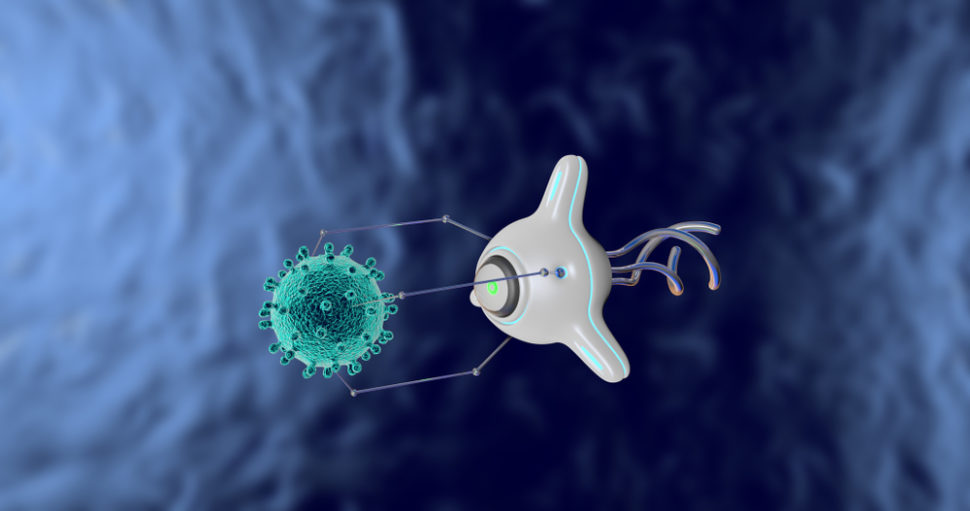Robots are designed to serve different purposes. Whether it’s working in the hospitality sector or helping out as cute pets, bots are quickly becoming part of our modern lives. Now the machines are adding one more thing to their capabilities — nano-healthcare.
A group of researchers from Zurich has developed microscopic robots that can swim through bodily fluids and deliver life-saving drugs into blood vessels.
A Science Advances journal paper released by the team describes the robot as “bacteria-inspired“.
The nanobot is biocompatible. So, its designed to inherently be harmless to living tissue. Also, as it can modify its shape as required, the tiny robot can comfortably pass through blood vessels.
According to Selman Sakar, a lead author of the paper, the robots have a special structure and composition. As a result, they can adapt to the nature of the fluids that they move through.
For example, when there’s a change in viscosity or osmotic concentration, the nanobots can change their shape. With that, they can maintain their speed and maneuverability without compromising control or direction.
How is this possible, you ask? The key comes from a secret ingredient — a new hydrogel nanocomposite.
How The Nanobots Work
The robots use hydrogel nanocomposites. These are relatively elastic hydrated, tightly bound polymer network filled with nanomaterials.
According to co-author Bradley Nelson, “Nature has evolved a multitude of microorganisms that change shape as their environmental conditions change. This basic principle inspired our microrobot design.”
In other words, these nanobots are not made from metals and do not contain tiny batteries, sensors or actuators. Instead, they include magnetic nanoparticles that respond to changes from surrounding electrical fields.
As a result, scientists have the option of either programming the nanobots to deform when required or move through cavities by leveraging fluid flow.
An essential advantage of the nanobots is the low bill of material. Both Nelson and Sakar claimed that a large volume of the nanobot could be manufactured at a reasonable rate.
The team intends to improve the machine’s ability to navigate more complex fluids in the future.
Within the next ten years, some experts claim that doctors will no longer have to depend on the use of tablets, capsules, or injections. Nanobots could simply take the required drug to specific regions of the body.



















Highly informative. But I’m just wondering, Do the nanobots come back out or just dissipate into the blood vessels?